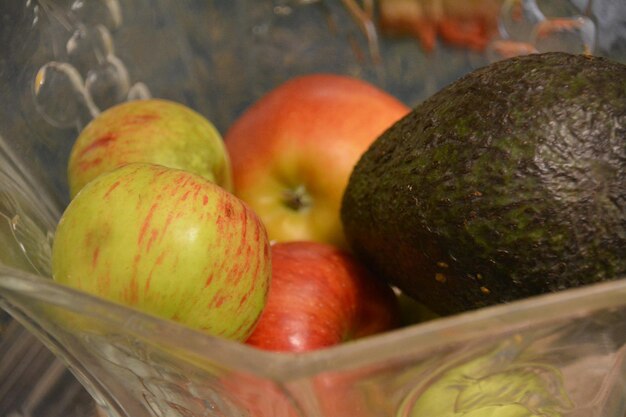Should You Store Nectarines in the Refrigerator? Essential Tips for Fresher Fruit 🍑
Nectarines, with their succulent flesh and sweet, tangy flavor, are a summer staple for many fruit lovers. But when it comes to keeping nectarines fresh and flavorful, there's often a debate: Should they be stored in the refrigerator or left at room temperature? This question is more than just a matter of preference; it involves understanding the intricacies of how nectarines ripen and how storage conditions affect their taste and texture. Let’s dive deep into the world of nectarines and unveil the best storage methods to extend their shelf life. 📦
Understanding Nectarine Ripening
The first step in determining the best storage method is understanding how nectarines ripen. Nectarines are climacteric fruits, meaning they continue to ripen after being picked. The ripening process involves changes in color, texture, and sweetness, which are driven by the fruit’s natural ethylene gas emissions.
Factors Affecting Ripening
Ethylene Concentration: As nectarines ripen, they produce ethylene, accelerating their own ripening and that of nearby fruits.
Humidity and Temperature: High humidity and warm temperatures speed up the ripening process, while cooler temperatures slow it down.
Physical Damage: Bruising or damage to the fruit can lead to faster degradation due to increased ethylene production at the site of injury.
Knowing these factors, you might wonder if the refrigerator—often a cooler, more consistent environment—is the answer to keeping nectarines fresh. 🥶
Refrigeration: Yes or No?
When to Refrigerate Nectarines
Ripe Nectarines: Once nectarines are fully ripe, refrigerating them can be a sensible choice. The cooler temperature slows further ripening and any decay, allowing you to enjoy them at peak freshness for several more days.
Extended Storage: If not planning to consume the nectarines within two to three days, refrigeration will extend their shelf life.
When Not to Refrigerate Nectarines
- Under-ripe Nectarines: Placing under-ripe nectarines in the refrigerator can halt their ripening process, resulting in a less sweet and flavorful fruit. For best results, allow nectarines to ripen at room temperature before refrigeration.
Room Temperature Ripening Tips
To hasten ripening, place nectarines in a paper bag with bananas or apples, which emit a higher concentration of ethylene, naturally promoting ripening. 🍌🍏
Storing Nectarines: Best Practices
Optimal Ripening: From Picking to Perfect
To ripen nectarines at room temperature, follow these simple tips:
Separate from Other Fruits: Keep nectarines away from other ethylene-producing fruits to control the ripening speed unless a quicker ripening is desired.
Check Daily for Ripeness: Gently press the fruit; it should give slightly, indicating ripeness. Nectarines also emit a fragrant aroma when ripe.
Avoid Direct Sunlight: Place them in a cool, shaded area to prevent over-ripening.
Maintaining Freshness: Inside the Fridge
Once ripened and moved to the refrigerator:
Store in a Crisper Drawer: Utilize the higher humidity levels in the crisper to keep the fruit moist and juicy.
Avoid Overcrowding: Give nectarines space for air circulation, which reduces bruising and prolonged pressure spots.
Use Perforated Bags or Containers: These allow for ethylene to escape and air to flow, reducing decay risks. 🛍️
Spotting the Signs: When Is a Nectarine Past Its Prime?
Recognizing when nectarines are no longer good is key to reducing food waste and always enjoying delicious fruit.
Signs of Spoilage
Mushy or Soft Areas: While slight softening means ripeness, mushiness indicates overripeness or spoilage.
Off Smell or Fermented Scent: This suggests that the fruit has begun to ferment, affecting taste and safety.
Discoloration or Mold: Visible mold or extensive browning are clear indicators that the fruit should not be consumed.
Practical Storage Tips to Remember
Here’s a quick reference list to help you decide on the best storage method for your nectarines:
- 🍑 Nectarines should ripen at room temperature to enhance flavor before refrigeration.
- 🥶 Refrigerate ripe nectarines to extend freshness but consume within a week.
- 📦 Use a paper bag for faster ripening when combined with bananas or apples.
- 🚫 Avoid refrigerating under-ripe nectarines to preserve their quality and taste.
Beyond Storage: Creative Ways to Use Overripe Nectarines
Even if a nectarine has passed its prime, there's still a plethora of delicious ways to use it:
Culinary Creativity with Overripe Nectarines
Smoothies: Blend nectarines with yogurt or milk for a refreshing drink.
Baking: Use overripe nectarines in pies, crumbles, or muffins where texture is less critical.
Chutneys and Sauces: Cook them down with spices for a savory or sweet condiment.
Freezing: Purée and freeze for popsicles or future sauces.
Table: Nectarine Storage Summary 📝
| Condition | Storage Recommendation | Time Frame |
|---|---|---|
| Under-ripe Nectarines | Room temperature in a paper bag | 1-3 days to ripen |
| Ripe Nectarines | Refrigerator in the crisper drawer | 5-7 days max |
| Overripe Nectarines | Use immediately or freeze for later | As soon as possible |
Understanding the nuances of nectarine storage not only preserves their delightful flavor and texture but also reduces waste and enhances the overall fruit experience. By following these guidelines, you’ll ensure that every nectarine you taste is as delicious as it is nutritious. 🍽️✨
Embrace the joy of perfectly ripe nectarines by storing them thoughtfully and savoring their sweetness in every bite. Happy snacking!
